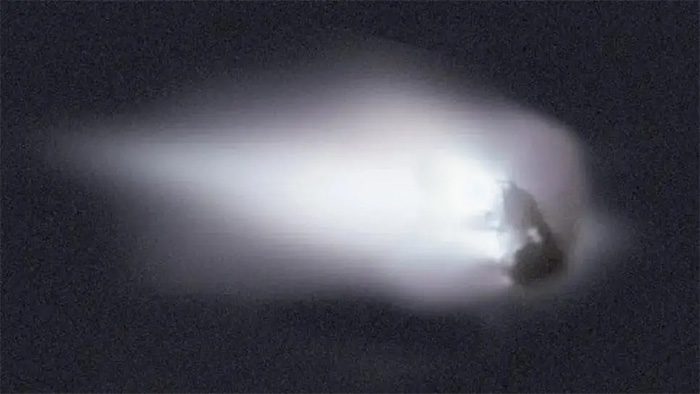The parent object of the “treasure” that is 4.6 billion years old, which fell to Earth in May, will change direction on December 9, beginning its return to us after 38 years of absence.
This event comes more than a month after the dust tail it left behind years ago brought the Orionid meteor shower to Earth.
The object that astronomers are eagerly anticipating is Halley’s Comet.

Rare photo of Halley’s Comet when it was near Earth in 1986 – (Photo: ESA).
According to Live Science, after its brilliant appearance before Earth’s eyes 38 years ago, Halley’s Comet has drifted further away, crossing the orbit of Neptune and nearly reaching the “front yard” of Pluto.
However, Earth still witnesses the remnants it left behind.
Twice a year, our planet passes through Halley’s dust tail, creating two beautiful meteor showers: the Orionids (peaking in late October) and the Eta Aquarids (peaking in May).
This past year, it also gifted Earth a priceless treasure, a meteorite that fell into a family’s home in New Jersey, USA.
Halley is an ancient comet, with an age comparable to that of the Solar System.
Thus, its meteoric fragments are unique treasures that space agencies like NASA spend hundreds of millions of dollars to hunt for: Samples containing the primordial materials that formed planets like Earth, which may even hold “seeds” of prebiotic life.
At the same time, the parent object is closely monitored by NASA. Observations a few days ago showed that this comet is about to swing its tail. On December 9, it will officially begin its 38-year journey back near Earth.
This will allow us to observe the comet up close once again in 2061.
Thus, on December 9, it will also be at a special point in its orbit known as the “aphelion”, the farthest point from the Sun.
According to NASA, Halley’s distance from our star today reaches 35 astronomical units (AU, where 1 AU is the distance from the Sun to Earth).


















































